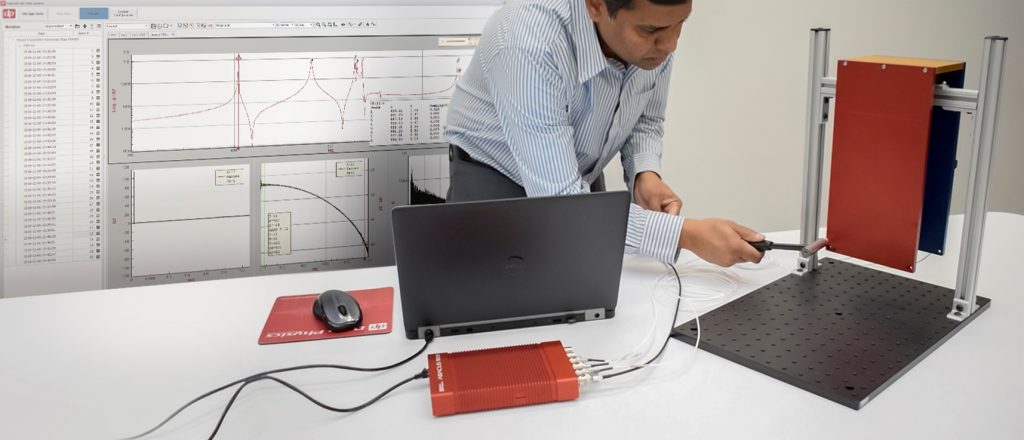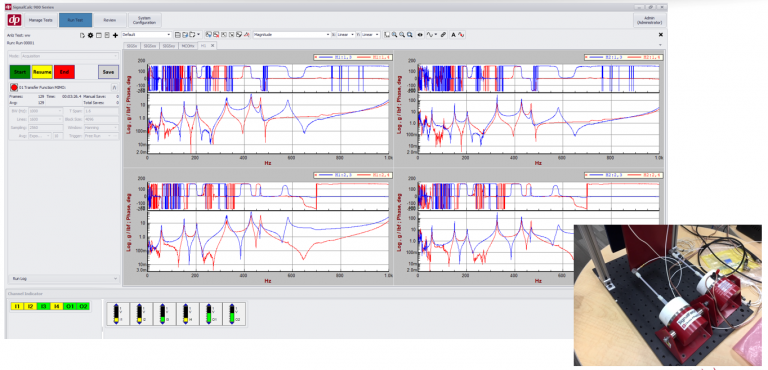modal testing
Identifying Structural Resonances is a Critical Part of Product Design. SignalCalc 900 Analyzers Provide a Variety of Ways to Identify the Modal Parameters of your Product
Modal Testing
Modal analysis can be done both experimentally through frequency response testing or mathematically using finite element analysis. Complex structural motion is reduced to individual vibration modes.
STANDARD FEATURES
- Transfer Function Measurements
- Zoom Analysis
- Structural Geometry Information
- Programmable sequence to tag points and directions
- Preview Average Mode
- Up to 51,200 frequency lines
- Automatic or manual export to MEscope, UFF, Matlab, SDF, ASCII/CSV
TYPICAL APPLICATIONS
- Modal testing on aircraft, spacecraft, automotive structures
- Modal analysis on machinery such as compressors, turbine blades, engine parts
- Modal testing on sporting equipment – tennis rackets, bicycle frames, hockey sticks
- Modal survey of bridges, buildings, floors
- Validation of Finite Element Models

Impact Hammer Testing
ICP and TEDS Hammer Support
Built in support for ICP and TEDS sensors or any voltage-output hammer
Preview Average
Preview each impact before adding it to the average
Rectangular, Force/Exponential Windows
Apply appropriate window function depending on the test setup
Auto Point/Direction increment
For tests which require multiple impacts, the software auto-increments points/directions for a streamlined acquisition experience
Shaker Modal Testing
Shaker Excitation
Large range of output signals (Random, Burst Random, chirp, etc) to drive shaker
Modal Shakers
Full range of modal shakers to use along with 900 Series Analyzers
Hanning/Rectangular Window
Apply appropriate window function for the excitation type
MIMO and Stepped Sine Analysis
Multi Output Multi Input Analysis (opt 71)
Analyze modal properties in complex structures by exciting with multiple shakers at different locations and directions simultaneously. Excitations from different source channels are uncorrelated ensuring highest quality transfer functions
Stepped Sine Analysis
Obtain test results by exciting a single frequency at a time. Using closed loop control and a defined settling condition, Stepped Sine Analysis is useful for characterizing nonlinear or time-variant structures


